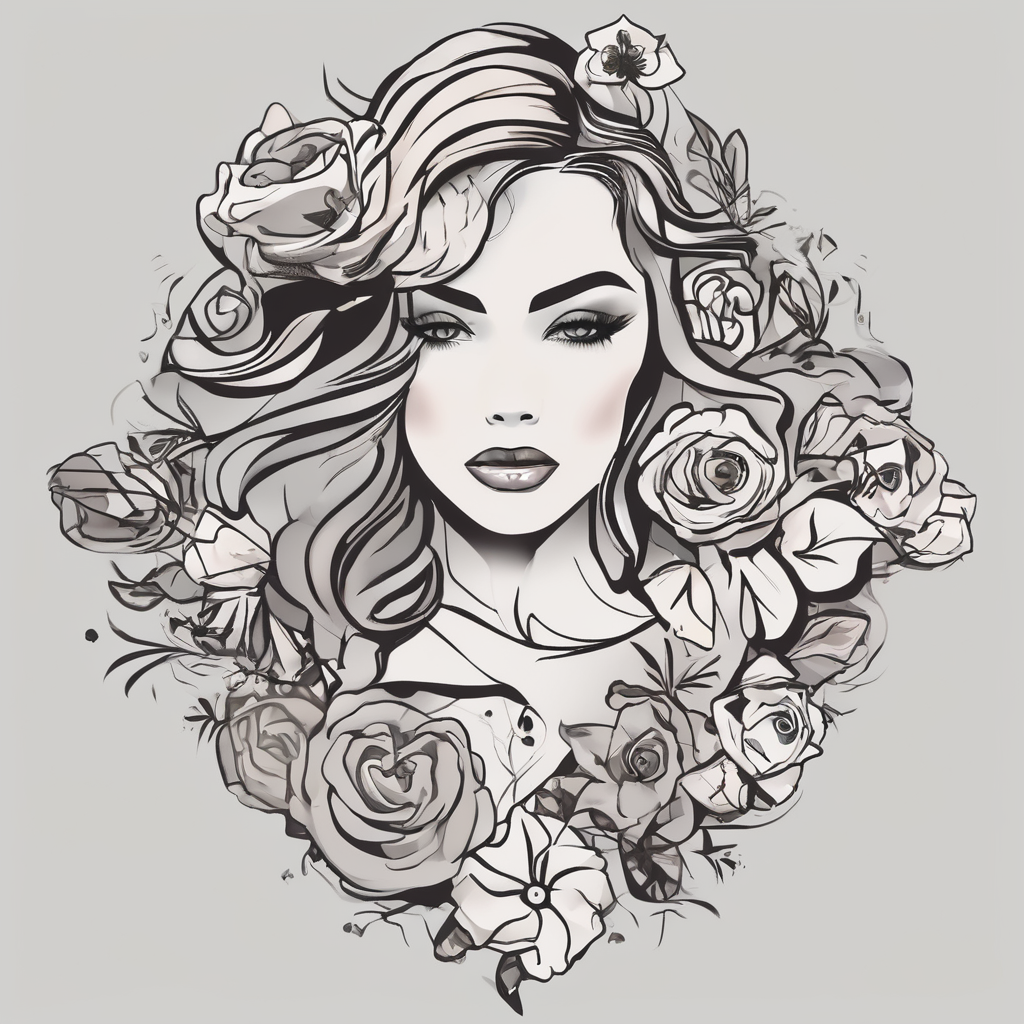Scotland, the beautiful land of bagpipes and haggis, is also home to an enduring sartorial symbol – the tartan. Specifically, we’re speaking about the tartan skirt, a garment that’s far more than just a fashion statement. Iconic, imbued with symbolism, and steeped in centuries of history, the tartan skirt is a proud symbol of Scottish heritage, often worn during traditional Highland gatherings and national events.
Whether you’re wandering along the cobbled streets of Edinburgh’s Royal Mile or attending a ceremony in a centuries-old Scottish castle, the tartan skirt is a wearable testament to Scotland’s rich past. Let’s delve into the key features that make the perfect tartan skirt, a must-have for every wardrobe.
Have you seen this : What Are the Ideal Fabrics for Creating a Sustainable UK Capsule Wardrobe?
1. The Scottish Tartan: A Historical Overview
To understand the significance of the tartan skirt, one must first delve into the history of the Scottish tartan itself. Woven into Scotland’s cultural fabric for over a thousand years, tartan patterns – or ‘setts’ – were originally regional, rather than linked to specific clans.
In the 18th century, tartan was at the heart of the Jacobite Rebellion, an attempt by Charles Edward Stuart (or ‘Bonnie Prince Charlie’) to regain the British throne for his father. After the rebellion was quashed, the British government sought to break the Highland clans’ power, outlawing tartan and banning the kilt. Hence, the tartan became emblematic of Scottish rebellion and national pride.
Also read : How to Layer Delicate Necklaces for a Sophisticated London Evening Out?
2. Tartan Patterns and Colours: A Statement of Identity
The full richness of the Scottish tartan lies in its patterns and colours. Each unique pattern is a visual representation of a clan’s history and heritage, making every tartan skirt a piece of wearable Scottish folklore.
There are over 7,000 registered tartans today, each with their own distinctive patterns and colours. The colour of a tartan pattern denotes specific symbolism. For example, green represents the Scottish landscape, blue symbolises Scottish lakes and skies, while red evokes courage and bravery.
When choosing the perfect tartan skirt, consider the symbolism of the pattern and colours, selecting one that resonates with your personal style or heritage.
3. The Perfect Fit: Kilts vs Tartan Skirts
While kilts and tartan skirts are both made from tartan fabric, they differ in style and fit. The kilt, traditionally worn by men, is a knee-length garment with pleats at the rear. The tartan skirt, on the other hand, is worn by women and can vary in length and style.
The original kilt, known as the ‘great kilt’, was a full-length garment that covered the upper and lower body. However, today’s kilts are a more manageable size. Despite the changes over the centuries, the kilt remains an important symbol of Scottish identity.
On the other hand, tartan skirts offer more flexibility in terms of fashion. They can be mini, midi, or full-length, and can be worn in a variety of settings – from casual outings to formal events. The key to choosing the perfect tartan skirt lies in finding a garment that is comfortable, fits well, and flatters your figure.
4. Edinburgh’s Royal Mile: The Ideal Setting for Your Tartan Skirt
Bustling with history and charm, the Royal Mile in Scotland’s capital, Edinburgh, is the perfect setting to show off your tartan skirt. Stretching from Holyrood Palace to Edinburgh Castle, the Royal Mile is packed with Scottish charm – from its unique architecture to its vibrant street performers.
Donning a tartan skirt while exploring this historic area adds an extra layer of authenticity to your Scottish experience. Imagine savouring a traditional Scottish meal at a local pub, or browsing the shops for unique souvenirs – all while wearing your tartan skirt. Just as the Royal Mile presents a visual story of Edinburgh’s history, your tartan skirt tells a story of its own.
5. Preserving Your Tartan Skirt: Tips to Save and Care
A tartan skirt is not just a piece of clothing, but a piece of history, and hence, it deserves to be cared for and preserved. Here are some tips to save and care for your tartan skirt:
- Always check the garment’s care label before cleaning. Some tartans may require dry cleaning, while others can be hand washed or machine washed on a gentle cycle.
- Iron your tartan skirt on the reverse side to avoid damaging the fabric.
- Store your skirt in a cool, dry place to prevent mould and mildew.
- Consider using a fabric protector spray to safeguard your skirt from stains and spills.
By investing time and care in your tartan skirt, you’re not just maintaining a garment – you’re preserving a piece of Scottish history that you can wear and enjoy for years to come.
6. Key Elements of the Perfect Tartan Skirt: Material, Thread Count, and Pattern
The first step towards finding the perfect tartan skirt lies in understanding its fabric and design. Traditionally, tartan skirts are made of high-quality wool, though modern versions may also use blends of cashmere, silk, or synthetic materials. The choice of fabric affects not just the texture and durability of the skirt, but also its drape and shape.
Just as important as the fabric is the thread count and construction of the tartan. Higher thread count means finer threads and a denser weave, translating to a more durable and luxurious garment. Traditional tartan designs also employ a balanced pattern, meaning the design is identical in both the warp and weft directions. This creates the distinctive checked appearance that is synonymous with the Scottish tartan.
The tartan pattern itself is also an important consideration. As mentioned earlier, each pattern or ‘sett’ is tied to specific Scottish clans or regions. For example, the Royal Stewart tartan, with its bold red and green checks interspersed with thin yellow and white stripes, is associated with the Royal House of Stewart. On the other hand, the Black Watch tartan, a more muted pattern of dark green and navy blue, is linked to the Highland regiment of the same name.
When selecting your tartan skirt, consider the historical and cultural significance of the pattern. Whether you choose a design linked to your Scottish ancestry or one that simply appeals to your aesthetic, your tartan skirt will carry a story woven into each thread.
7. A Tartan Skirt’s Place in a Modern Wardrobe
While deeply rooted in history and tradition, the tartan skirt is not stuck in the past. In fact, it has successfully evolved and adapted to modern fashion trends, making it a versatile addition to any wardrobe.
Tartan skirts can be dressed up or down to suit any occasion. Paired with a crisp white blouse and a pair of classic pumps, a tartan skirt can make for a sophisticated office ensemble. On the other hand, combining it with a comfy sweatshirt and a pair of sneakers can create a laid-back, casual look perfect for a weekend outing.
Moreover, tartan skirts are also well-suited for festive occasions, like the Highland games or a Burns Night supper. Worn with a traditional Highland dress, such as a lace jabot or a belted plaid, the tartan skirt becomes a part of a stunning ensemble that celebrates Scottish heritage. And of course, it’s the ideal outfit for a stroll down the Royal Mile or a visit to the Edinburgh Castle or the St. Giles Cathedral.
Whether you’re attending a formal event at the Great Hall or exploring the Scottish Highlands, a tartan skirt lends an air of authenticity and tradition to your outfit. So even if you’re far away from Scotland or the United Kingdom, wearing a tartan skirt can bring a piece of Scottish culture and history right into your wardrobe.
Conclusion: Embrace the Tartan Skirt and Celebrate Scottish Heritage
In conclusion, the perfect tartan skirt is more than just a fashionable garment. It’s a symbol of Scottish heritage, a piece of wearable history, and a statement of identity. From the quality of the fabric and the intricacy of the tartan pattern to the fit and style of the skirt, every aspect of this garment reflects the rich culture and history of Scotland.
Whether you’re attending a traditional Scottish event, exploring the charming streets of Edinburgh’s Royal Mile, or simply adding a touch of Scottish flair to your everyday outfits, a tartan skirt is a stylish and meaningful addition to your wardrobe. By choosing a tartan pattern that resonates with you, and by caring for your tartan skirt properly, you’re not just wearing a skirt – you’re embracing a centuries-old tradition and keeping the spirit of Scotland alive.
So why wait? Visit a reputable Scottish kilt shop, like Kinloch Anderson or Scottish Tartans, try on a few tartan skirts, and discover the joy and pride of wearing a piece of Scottish history. From the royal halls of the Edinburgh Castle to the rugged landscapes of the Scottish Highlands, let the tartan skirt be your companion in celebrating and appreciating the beauty of Scotland.











